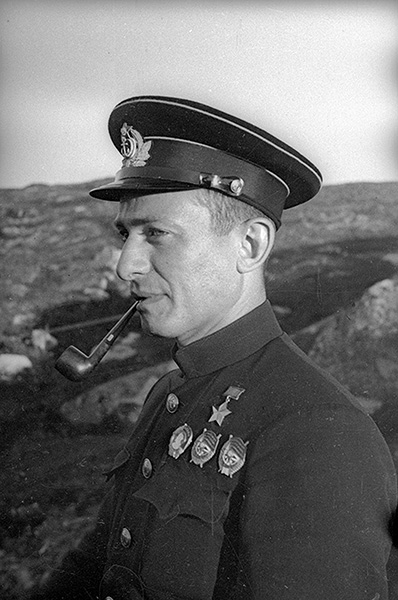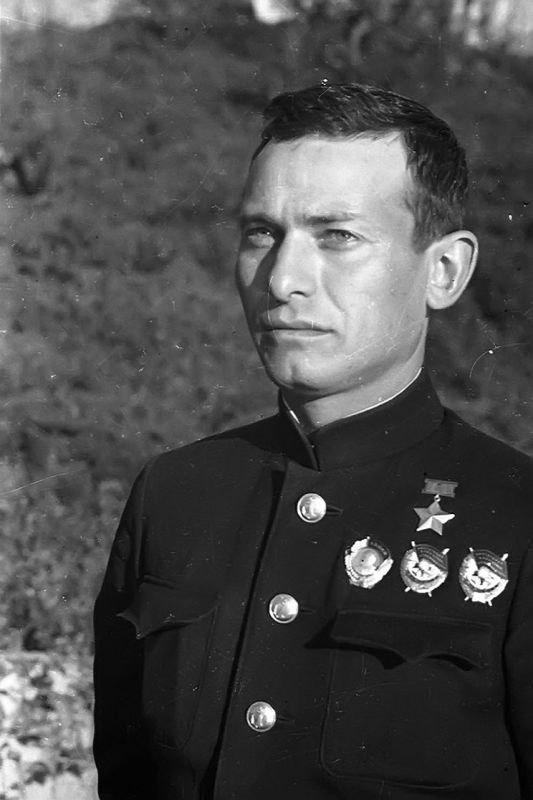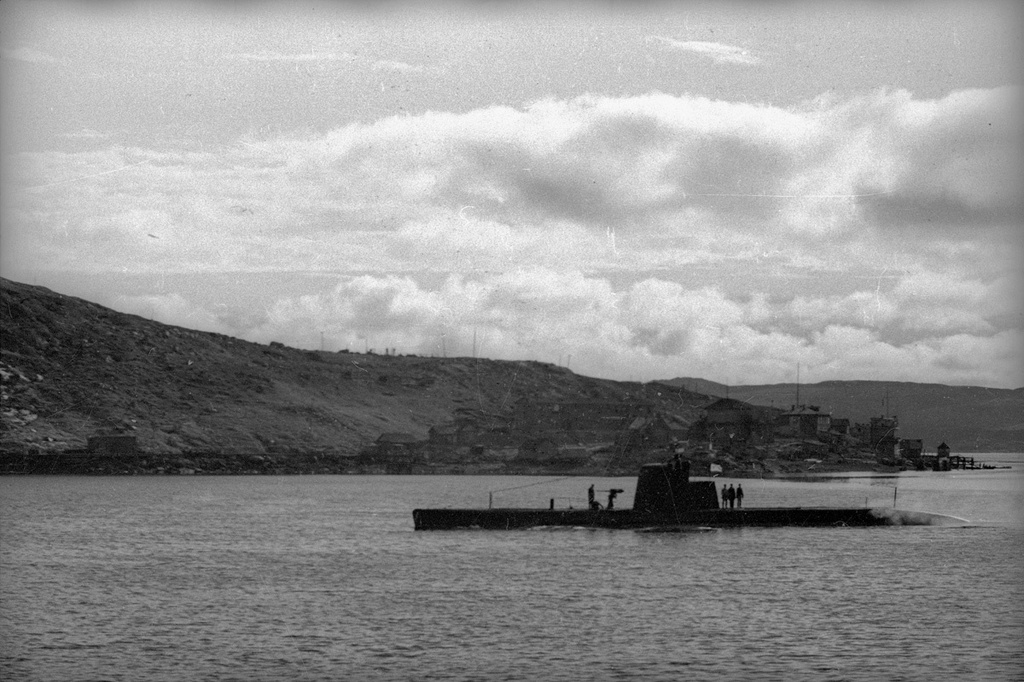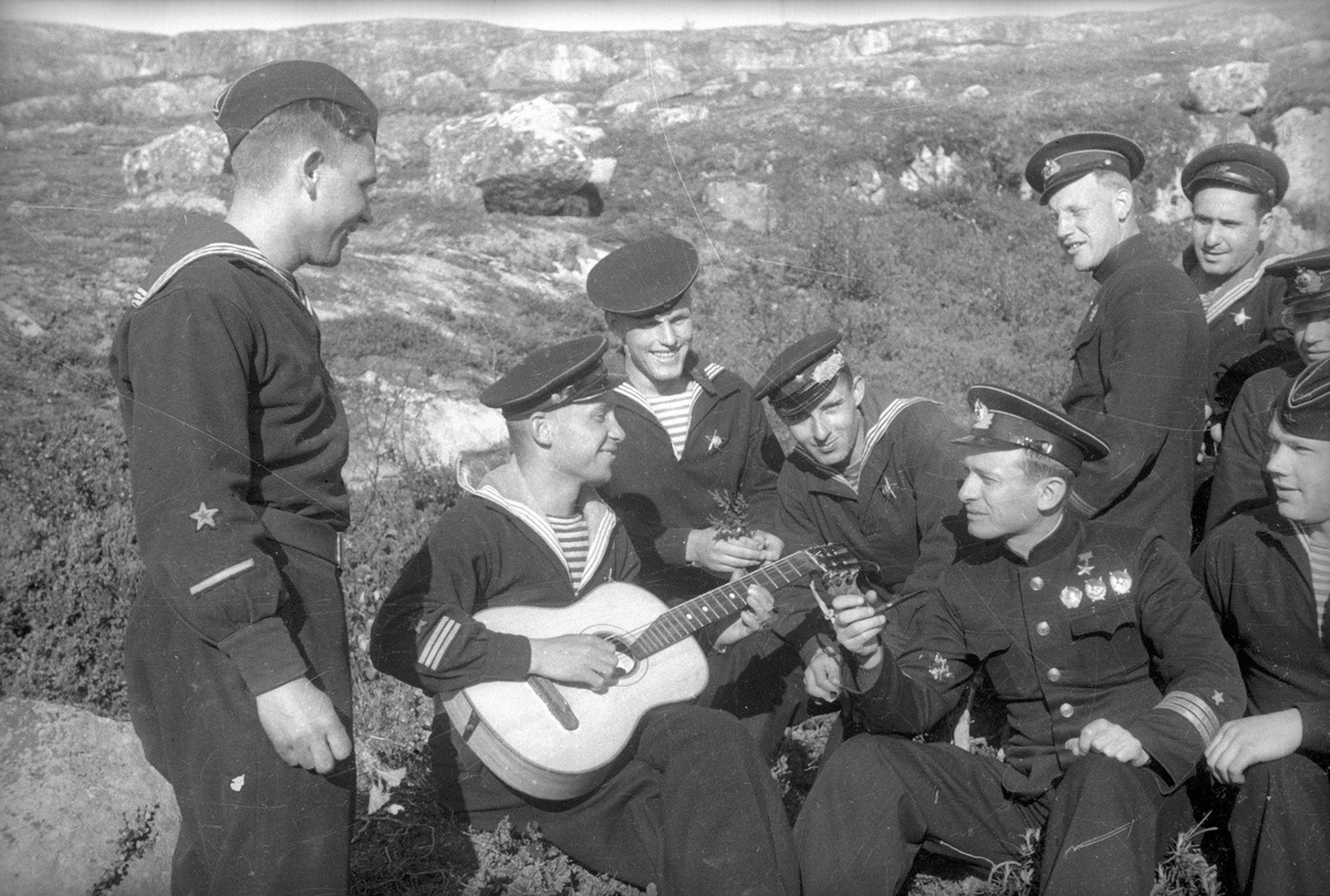Israel Fisanovich
Israel Ilyich Fisanovich (Russian: Израиль Ильич Фисанович) was born on 23rd November, 1914, into a working-class Jewish family in Elizavetograd (now Kropyvnytskyi, Ukraine), in the Russian Empire. In 1922, his family relocated to Kharkiv, where he completed his high school education. After graduation, Fisanovich began working as an apprentice at the Hammer and Sickle tractor factory. He later joined the Soviet Navy and attended the Frunze Military Academy, where he excelled as the top cadet, earning a silver watch from Defence Minister Voroshilov as a prize.

In 1936, Fisanovich joined the Baltic Fleet, eventually commanding the submarine M-84. Two years later, in 1938, he was transferred to the Northern Fleet and, by 1941, had assumed command of the submarine M-172. Throughout his service, Fisanovich conducted 17 successful war patrols, sinking two Nazi warships, ten cargo ships, and a tanker.

Fisanovich was not only the first to break through the long, narrow fjord into the enemy port of Petsamo (see also Viktor Nikolayevich Leonov), but he was also the first among the commanders of the Northern Fleet’s submarine brigade to sink two enemy cargo ships in a single mission. By mid-December 1941, under Fisanovich’s command, M-172 submarine had completed 7 combat missions, during which it sank 3 enemy merchant ships and deployed 2 reconnaissance groups behind German lines. By July 1943, Fisanovich was in charge of a division within the Submarine Brigade of the Northern Fleet.
In 1944, Fisanovich travelled to Britain to take command of the former HMS Sunfish, which had been lent to the Soviet Navy and renamed V-1 (В-1). During the journey back to the USSR on 27th July, V-1 was mistakenly attacked by a British RAF Coastal Command Liberator aircraft. Tragically, the submarine was lost with all hands, including a British liaison officer. It was initially alleged that Fisanovich was outside the designated area and should have remained surfaced to send a recognition signal. Both the RAF and Royal Navy conducted inquiries into the incident, with files available in the National Archives (AIR 2/9279 and ADM 1/16390).
The investigations concluded that Captain Fisanovich was almost exactly where he was supposed to be. He did not open fire on the aircraft, nor did he perform a crash dive when it approached. The RAF Coastal Command, believing they were targeting a U-boat based on Enigma decrypts, mistakenly attacked the B-1. The 86 Squadron Liberator crew responsible for attacking B-1 was found to have been at least eighty miles off course, within the ‘submarine sanctuary’ that protected B-1 as it headed north. The crew also ignored clear indications that the submarine was friendly. Captain Fisanovich was exonerated from all blame, while the RAF aircrew were held accountable for the incident. The event was kept classified to prevent diplomatic tensions before the Yalta Conference. Fisanovich was awarded an American medal ‘Navy Cross’.

The Arctic: the submarine M-172 with Fisanovich’s crew, in May 1943
Following the Coastal Command Liberator aircraft tragedy, Israel Fisanovich and his crew were commemorated at the Dundee International Submarine Memorial.

